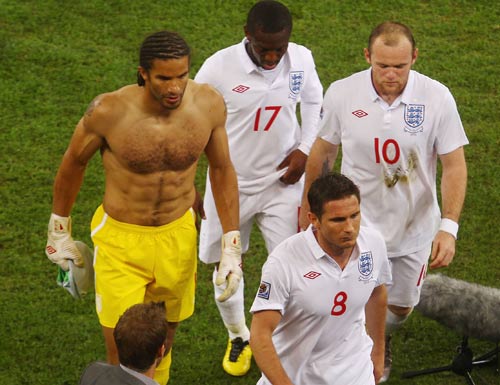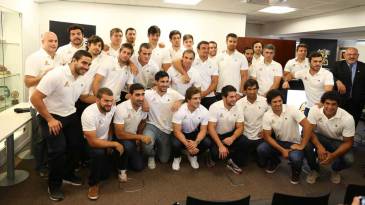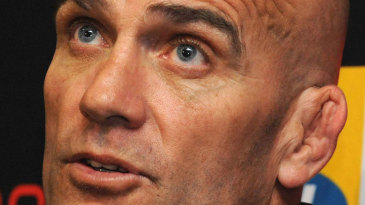- Drivers:
- Alfred Neubauer
If you took the 2010 grid, stripped all the cars of paint and muddled them up, only the most dedicated F1 anorak would be able to tell them apart. Paint schemes are engrained in the sport and its history. Most fan's fondest memories of Formula One are wrapped up in nostalgic liveries, be it the black and gold of Lotus, the day-glow red and white of McLaren or the omnipresent scarlet of Ferrari.
In the beginning it was simple; you took your country's national colour (Green for Britain, Blue for France, Red for Italy etc.) applied it liberally and slapped a number on it issued by the organising body. Mercedes was one of the first to buck the trend in grand prix racing by ditching the traditional German white for bare aluminium.
The story goes that legendary team boss Alfred Neubauer turned up to the Nurburgring with his new W25 only to find that the car was a kilo over the maximum weight limit. In order to allow the cars to compete at their home race, he told his team to scrape the paint off and in doing so saved the necessary kilo. Rather sadly, however, this story is probably completly untrue and it is more likely to be one of many tall tales dreamt up by Neubauer to keep himself amused.
The current paint process is far less capricious and, like so much in modern F1, has been boiled down to a fine science. A quick visit to McLaren's paint shop, where the iconic chrome and rocket red livery is applied to Lewis Hamilton's and Jenson Button's MP4-25s, opens up a side to the sport that is very seldom explored.

Behind McLaren's paintwork is Sikkens AkzoNobel, a Dutch car refinishes company that was approached by Ron Dennis ahead of the 2009 season with something of a challenge. Dennis wanted to maintain the McLaren's chrome finish - used on the car since 2006 - but also make the paint as light as possible.
McLaren Engineering Director Paddy Lowe explains: "It's very easy to get a fantastic paint finish by putting layer upon layer of paint on the car, but the question is how you get that result with fewer layers and less weight?"
By employing some of the most advanced techniques and an entirely unique chrome formula, Sikkens AkzoNobel managed to get the overall weight of paint on a finished chassis - minus nosecone and wings - down to 1-2 kilos. In a sport where a couple kilos of extra ballast on the right part of the car can make the difference between places on the grid, that development was warmly welcomed by McLaren.
"It's a specialised area but one that you want to find an edge," Lowe adds. "If you can find 20 areas like that you start to make a very big difference as a competitor."
Equally important for a team like McLaren is the basic aesthetics of the car and the image it portrays to millions of TV viewers. Before any car can start testing it has to meet Dennis' personal approval in a ceremonial signing off process that takes place before the launch. The team lines up in the McLaren Technology Centre alongside its latest creation and Ron comes down from his office to give it a once over. If he's happy he places one hand on the bodywork, but if not it goes back into the bowels of the factory to be rectified. Expectations are high.

And to ensure that image is maintained race-to-race, one of the first places the car goes on its return to the factory is the paint shop. A laborious process sees the paint stripped back to the primer before a clear coat, chrome and final top coat are added. Since being supplied by Sikkens AkzoNobel, McLaren have cut the number of coats to 4 (officially 4 and a half, although what the half coat entails is a bit of a mystery) from six and in doing so has saved both weight and valuable application time.
Watching the McLaren's paint being hacked away is an excruciating process, much like nails on a blackboard, but it's entirely necessary to get back to the primer and build up the coats. More enjoyable is the repainting. Each coat is applied and then cured by a huge custom-built infrared arch that hovers over the bodywork, dramatically reducing the time of the whole process. And time is another factor that is crucial to McLaren.
"In Formula One there's a constant push, relentless development of bodywork," says Lowe. "We bring new pieces to every race and the earlier the race you can bring them to the quicker you get the new performance. If you have a paint process that takes a week, for the sake of argument, that's lost performance. If you have a paint process that takes six hours you're ahead of the curve on your lap time.

There is an awful lot of skill that goes into the repainting process. The distinctive red highlights that run down the nose of the McLaren are hand airbrushed, meaning each paint job is unique. It requires an artist with an incredibly steady hand; one mistake and you could cost the team a huge amount of time.
Once the car has received the approval of paint shop boss George Langhorn - who has been overseeing the team's liveries for over 30 years - the bodywork is stickered with McLaren's many sponsors and loaded up for the next race.
Who said watching paint dry is boring?
Laurence Edmondson is an assistant editor on ESPNF1
© ESPN Sports Media Ltd.
 Laurence Edmondson is deputy editor of ESPNF1 Laurence Edmondson grew up on a Sunday afternoon diet of Ayrton Senna and Nigel Mansell and first stepped in the paddock as a Bridgestone competition finalist in 2005. He worked for ITV-F1 after graduating from university and has been ESPNF1's deputy editor since 2010
Laurence Edmondson is deputy editor of ESPNF1 Laurence Edmondson grew up on a Sunday afternoon diet of Ayrton Senna and Nigel Mansell and first stepped in the paddock as a Bridgestone competition finalist in 2005. He worked for ITV-F1 after graduating from university and has been ESPNF1's deputy editor since 2010

